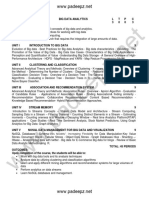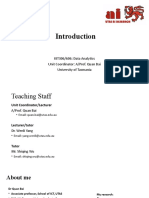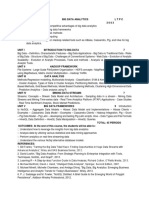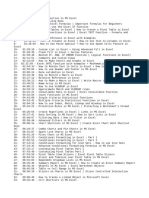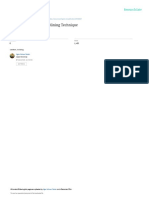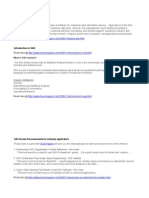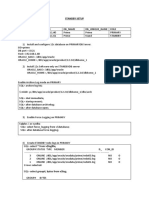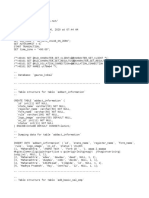0% found this document useful (0 votes)
59 views3 pagesData Analytics Syllabus Created
The Data Analytics (BIT 601) course focuses on various aspects of data analytics, including the data analytics pipeline, classification and regression techniques, and mining techniques for streaming data. The syllabus covers topics such as data analysis, clustering algorithms, and frameworks like Hadoop and R programming for big data analytics. Students will gain practical skills through lectures and case studies, preparing them for real-world data analytics applications.
Uploaded by
ksriv3107Copyright
© © All Rights Reserved
We take content rights seriously. If you suspect this is your content, claim it here.
Available Formats
Download as PDF, TXT or read online on Scribd
0% found this document useful (0 votes)
59 views3 pagesData Analytics Syllabus Created
The Data Analytics (BIT 601) course focuses on various aspects of data analytics, including the data analytics pipeline, classification and regression techniques, and mining techniques for streaming data. The syllabus covers topics such as data analysis, clustering algorithms, and frameworks like Hadoop and R programming for big data analytics. Students will gain practical skills through lectures and case studies, preparing them for real-world data analytics applications.
Uploaded by
ksriv3107Copyright
© © All Rights Reserved
We take content rights seriously. If you suspect this is your content, claim it here.
Available Formats
Download as PDF, TXT or read online on Scribd
/ 3





























